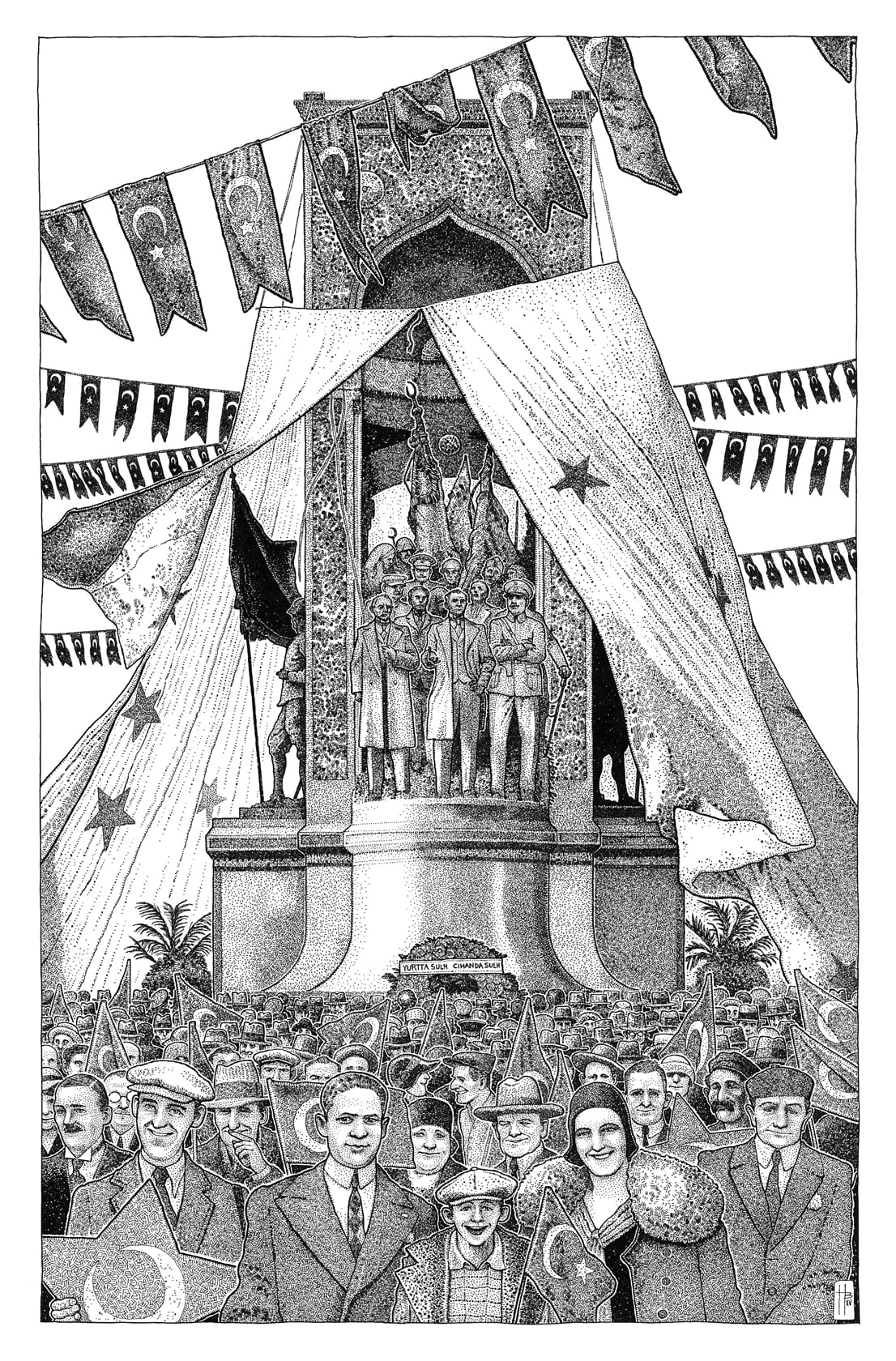28 October 2015
 Unveiling of the Republic Monument - Benoît Hamet
Unveiling of the Republic Monument - Benoît Hamet
Celebrating its 10th anniversary this year, Pera Museum invites artist Benoît Hamet to reinterpret key pieces from its collections, casting a humorous eye over ‘historical’ events, both imagined and factual. Taksim achieved its ‘square’ character during the early Republic era. Undoubtedly, the most meaningful element of this transformation was, and still is, the Republic Monument, which was erected by the Italian sculptor Pietro Canonica in 1928.
Reflecting the First National-style with its Seljuq and classic Ottoman details, it features two main sculpture groups on its north and south sides. This time Hamet’s drawing makes a reference to a photograph taken by Salahaddin Giz, from Suna and İnan Kıraç Foundation Photography Collection. Hamet has depicted the crowd posing for photographer and the Republic Monument on the backgorund.
Benoît Hamet was born in 1984 in France. He completed his Bachelor and Master’s degrees at the European School of Visual Arts Angoulême/Poitiers. He spent one year of his Master’s degree on an Erasmus scholarship at the Accademia di Belle Arti di Bologna. He continued working in Angoulême following graduation and illustrated for a variety of French publishers. He currently lives and works in Istanbul.
Tuesday - Saturday 10:00 - 19:00
Friday 10:00 - 22:00
Sunday 12:00 - 18:00
The museum is closed on Mondays.
On Wednesdays, the students can
visit the museum free of admission.
Full ticket: 300 TL
Discounted: 150 TL
Groups: 200 TL (minimum 10 people)